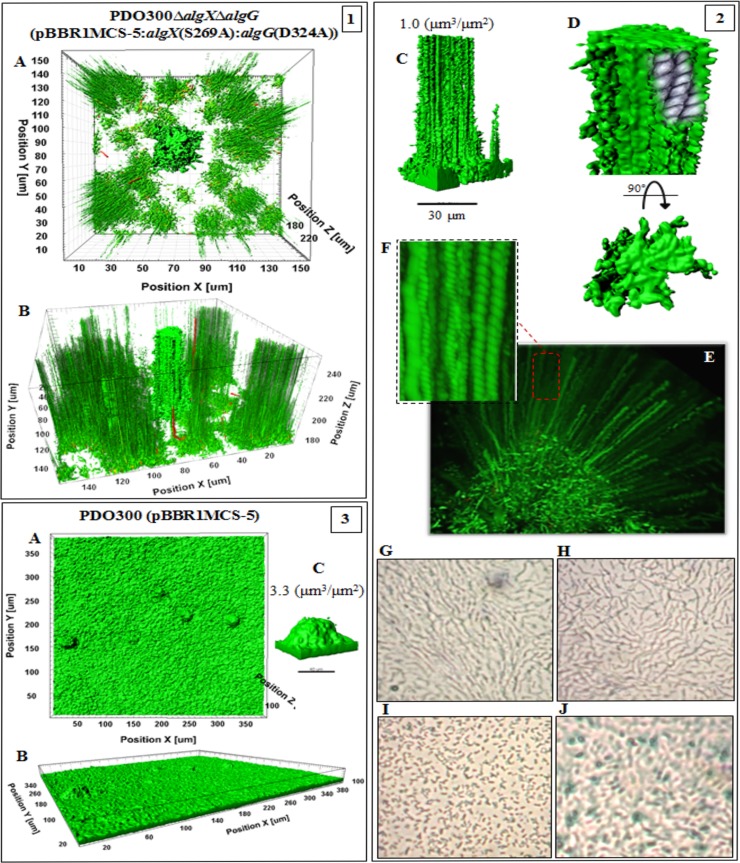FIG 8 .
Biofilm architecture of mutant-producing nonepimerized and nonacetylated alginates and the wild type. This figure shows biofilm formation and architecture of the PDO300ΔalgXΔalgG(pBBR1MCS-5:algX(S269A):algG(D324A)) (frames 1 and 2) and PDO300(pBBR1MCS-5) (frame 3) mutants. In all frames, A, B, and C show, respectively, top views, side views, and a representative of typical highly structured cell communities for that mutant with biovolume-per-area (µm3 ⋅ µm−2) ratio. The biofilm architecture visualized for the mutant producing nonacetylated poly(M) alginate (frames 1and 2) was remarkably different from that of other applied mutants. Affected by alginate properties, emerging biofilm consists of very narrow but long elevated microcolonies representing longitudinal cell trails or strips indicating stigmergic self-organization and adaptation of cells in weak matrices. Frames 2D to F represent close side and top views of one of the microcolonies and cell trails, and cell-cell interactions in each cell trail are depicted in sketches. Frames 2G to J show micrographs (×40 magnification) of the edge (H and I) and surface (G and J) of mucoid colonies of the PDO300ΔalgXΔalgG(pBBR1MCS-5:algX(S269A):algG(D324A)) (G and H) and PDO300(pBBR1MCS-5) (I and J) mutants forming a thin layer on PIA medium after incubation at 37°C for 18 h. Organization of cells of the PDO300ΔalgXΔalgG(pBBR1MCS-5:algX(S269A):algG(D324A)) mutant showed a linear filamentous aggregation pattern. Wild-type biofilm architecture is presented in frame 3.

